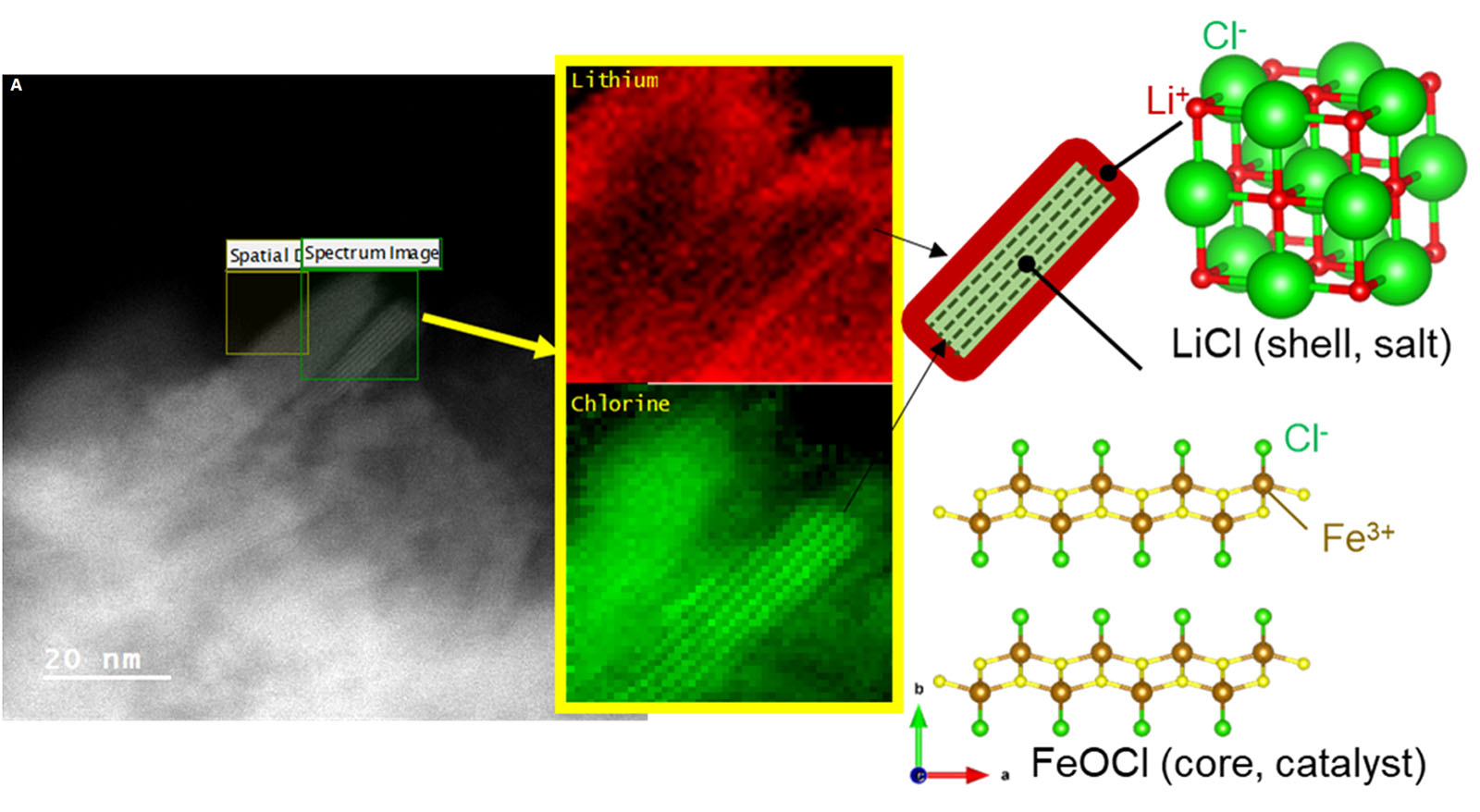User of Scientific Experimental Facilities: Toyota Research Institute of North America

Figure A: The unique LFH core-shell structure which facilitates interstitial lithium-ion diffusion as observed through TEM-EELS mapping.
Outcome: Toyota Research Institute of North America, collaborating with MRSEC-supported scientists and facilities have developed a novel [LiCl]/[FeOCl] heterointerface composite material (LFH) that achieves high lithium-ion conductivity from two traditionally non-conductive materials. The unique core-shell structure facilitates interstitial lithium-ion diffusion. Detailed structural analysis through transmission electron microscopy (TEM) and electron energy-loss spectroscopy (EELS) confirmed the core-shell architecture with lithium ions concentrated in the shell region.
Impact and Benefits: This breakthrough provides a new pathway for developing solid-state electrolytes with high ionic conductivity, chemical stability, and improved safety for next-generation batteries. The design concept extends beyond lithium systems to other energy storage applications. The approach could lead to superior ceramic electrolytes for electric vehicles, enabling batteries with higher energy density, longer cycle life, and reduced fire hazards compared to conventional liquid electrolytes.

Interfacial lithium-ion diffusion (ii) was confirmed over bulk diffusion (i) via additional analysis techniques.
Explanation The research team created a ceramic heterointerface by combining lithium chloride (LiCl) and iron oxychloride (FeOCl). Using advanced microscopy and spectroscopy, they revealed a core-shell structure where a crystalline FeOCl core is surrounded by an amorphous LiCl shell. The interface promotes interstitial lithium-ion diffusion with a low activation energy of 0.25 eV, comparable to advanced fast ion conductors. A prototype solid-state cell demonstrated 97% Coulombic efficiency, confirming the material’s potential for practical energy storage applications.
Shingo Ohta, et al.,, Fast ionic conduction achieved through the design and synthesis of ceramic heterointerfaces, Joule, 9 (2), 2025. doi.org/10.1016/j.joule.2024.11.006.
